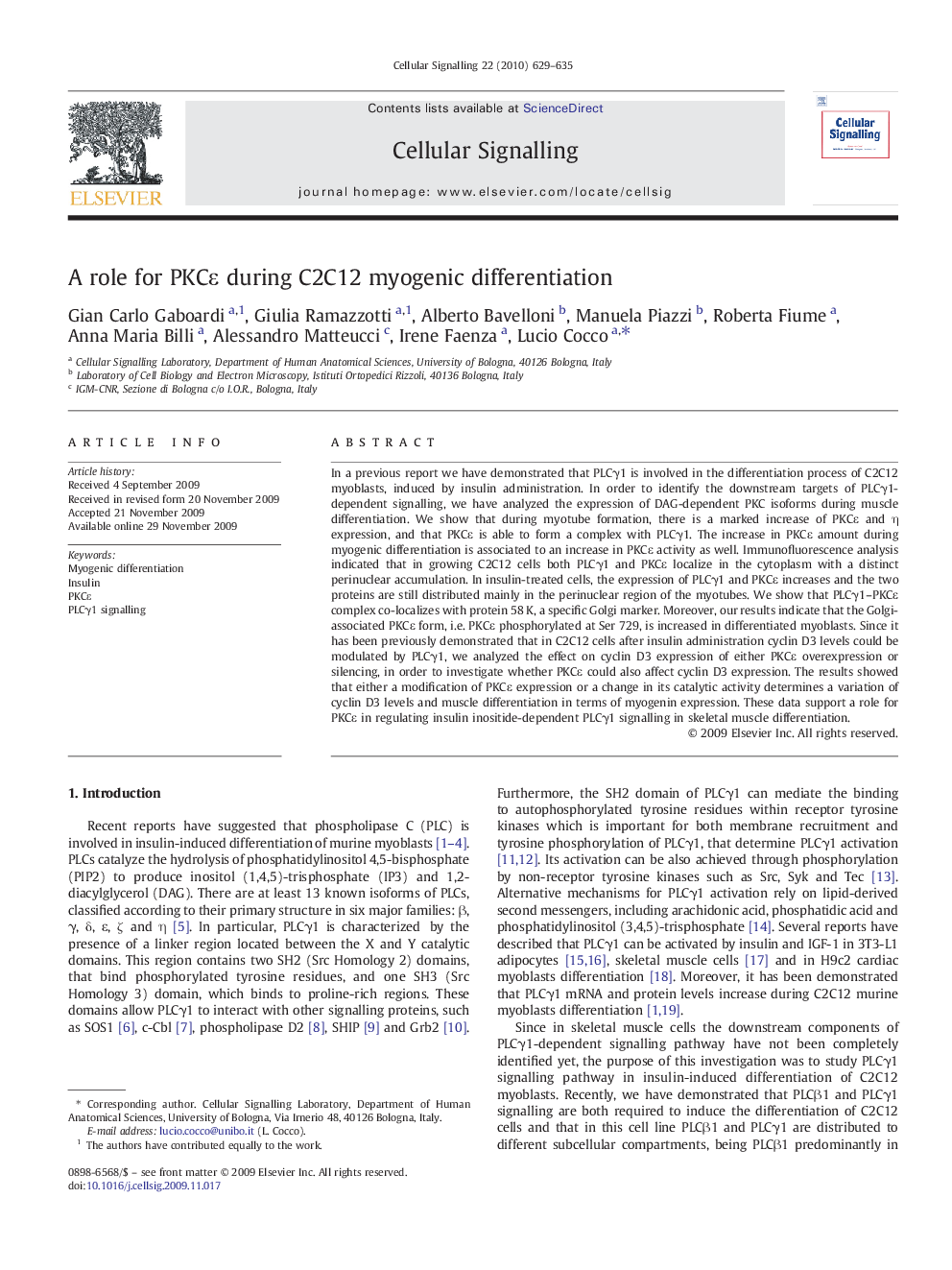| Article ID | Journal | Published Year | Pages | File Type |
|---|---|---|---|---|
| 1963760 | Cellular Signalling | 2010 | 7 Pages |
In a previous report we have demonstrated that PLCγ1 is involved in the differentiation process of C2C12 myoblasts, induced by insulin administration. In order to identify the downstream targets of PLCγ1-dependent signalling, we have analyzed the expression of DAG-dependent PKC isoforms during muscle differentiation. We show that during myotube formation, there is a marked increase of PKCε and η expression, and that PKCε is able to form a complex with PLCγ1. The increase in PKCε amount during myogenic differentiation is associated to an increase in PKCε activity as well. Immunofluorescence analysis indicated that in growing C2C12 cells both PLCγ1 and PKCε localize in the cytoplasm with a distinct perinuclear accumulation. In insulin-treated cells, the expression of PLCγ1 and PKCε increases and the two proteins are still distributed mainly in the perinuclear region of the myotubes. We show that PLCγ1–PKCε complex co-localizes with protein 58 K, a specific Golgi marker. Moreover, our results indicate that the Golgi-associated PKCε form, i.e. PKCε phosphorylated at Ser 729, is increased in differentiated myoblasts. Since it has been previously demonstrated that in C2C12 cells after insulin administration cyclin D3 levels could be modulated by PLCγ1, we analyzed the effect on cyclin D3 expression of either PKCε overexpression or silencing, in order to investigate whether PKCε could also affect cyclin D3 expression. The results showed that either a modification of PKCε expression or a change in its catalytic activity determines a variation of cyclin D3 levels and muscle differentiation in terms of myogenin expression. These data support a role for PKCε in regulating insulin inositide-dependent PLCγ1 signalling in skeletal muscle differentiation.
